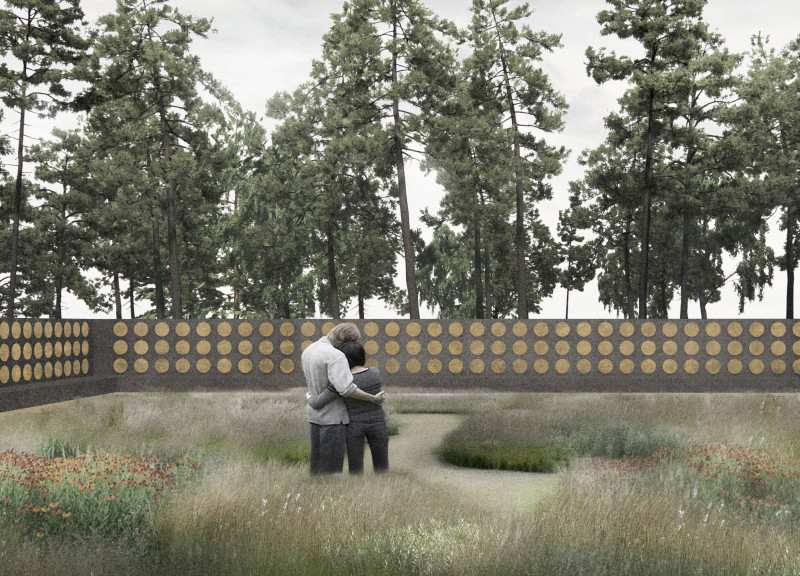5 key facts about this project
The Urn Garden at Riga Forest Cemetery features an architectural space that thoughtfully connects with its natural environment. Located in the northern section of the cemetery, the design balances the dense forest with areas for contemplation and remembrance. The central aim is to create a peaceful place for visitors to reflect while honoring the rich cultural background of the site.
Design Concept
The design focuses on a smooth transition from the thick woods to a carefully tended area for reflection. At the heart of the layout is a perennial garden that acts as a central point of interest. This garden represents growth and change through the seasons, reinforcing the theme of life and memory. The arrangement encourages visitors to engage deeply with the space and their thoughts.
Wall Enclosure
A key feature of the Urn Garden is the low wall that surrounds it. This wall defines the garden's boundaries while providing niches for burial urns, allowing multiple urns to be placed together. Each niche has a lid with the names of the deceased engraved on it, which enhances the memorial function of the garden. This thoughtful design element contributes visually to the overall appearance of the space.
Access and Pathways
Entrance to the Urn Garden is marked by a tall covered portal located at the lowest area of the site. This entrance creates a noticeable shift from the outside environment to a calmer, quieter space. Pathways leading into the garden are designed to guide visitors as they transition from hard surfaces to softer, fine gravel. This change creates a more reflective atmosphere as visitors move through the garden.
Seating and Reflection Areas
Inside the garden, benches invite visitors to take a moment to rest and think. The placement of these benches enhances the peaceful nature of the space, allowing people to remember their loved ones in a comfortable environment. The design of these seating areas ensures they blend well with the garden, promoting a sense of tranquility and connection to nature.
The concrete wall surrounding the garden is built for longevity and low maintenance, symbolizing a lasting tribute to those remembered here. Its solid design emphasizes the importance of memorialization and strives to create a meaningful experience for both visitors and their memories.






















































